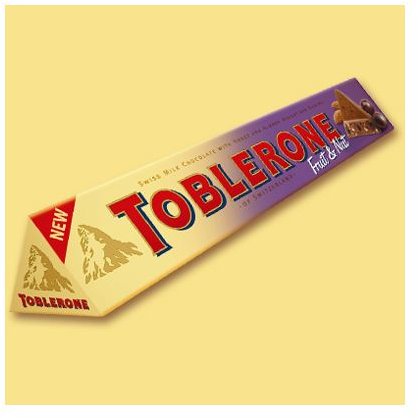Hidden Messages in Designs: An Idea Set to Continue?
Those Clever Designers!
Now before we start, let’s get one thing straight. When we refer to hidden messages in designs we are not referring to any subliminal messages, or the kind of message that you have to squint to see, or that are open to interpretation. We are talking about those clever designs that have something truly hidden in them.
The idea is that first you see the primary image (the logo for example), and then you’ll see the hidden message – often used to strengthen the message of the primary image. The Amazon logo is a prime example of this; see the arrow underneath? It’s going from A to Z to show that the company stocks pretty much everything. Cleverly, the designer has also got another message in here too, making the arrow look like a smile – nothing but happy customers!

The most famous example of a hidden message in a logo is the FedEx logo. It’s a logo you’ve seen hundreds of times before, but have possibly never noticed the hidden detail. Take a close look at the white space between the E and the X and you’ll see an arrow. This represents speed and precision for which the company is known for. Although an apparently simple design, it took the company and the designer 200 different creations to get through before deciding on this one. In truth, the simplicity really is the beauty and heightens the effectiveness. This logo has actually won numerous awards for Landor Associates.
The Delight of Finding Them
So, these designs are all very well and good, and naturally very clever, but what’s in it for a graphic designer or a company to adopt the hidden message approach? Is it worth your while? I’m not going to claim it’s an easy thing to do – despite the finished designs appearing so simple – but if there’s any way you can make it work, then do it.

Having a design out there with a hidden message gives you that bit of extra power. It definitely gets people interested and there are big opportunities for it to go viral if you are really clever. For companies, it can also be used as a way to show the kind of company they are, and can generate some real hype – basically it’s free advertising or at least stretching your message that bit further. People just love to find hidden messages and will associate your company with being fun and clever, as well as whatever message you’ve hidden as well. It’s marketing and then some!
I consider myself quite a chocolate connoisseur, but it wasn’t until researching this article I found that Toblerone has a hidden message in its logo. Now I can’t stop thinking about chocolate, will probably buy a bar or two later and will definitely tell my friends about the hidden bear on the side of the snowy mountain seen on the packaging. (Bern in Switzerland where Toblerone originates, features bears on its flag and is named after a bear.) The company doesn’t make a big deal about it, but it’s certainly an approach that works.
Is It Really That New?

It may surprise you to learn that hidden messages in logos is actually a pretty recent phenomena. Although we’ve always been fascinated with hidden messages and optical illusions, it seems graphic designers were slower to pick up the baton than game developers, and even further behind Walt Disney. Gamers love to find hidden cheats, codes and what are known as Easter eggs – and if you are the first to find them expect big kudos and social media traffic.
Visitors to Disney World are bombarded with images of Mickey Mouse, but there is also a whole heap of hidden Mickeys to be found throughout the park. In fact those clever Disney chaps have even found a way to not only cause excitement about this, and get you to visit lesser-known parts of their parks, but also sell a book detailing all the hidden Mickeys and where you can find them. So, hidden messages can definitely mean bigger profits.
It’s interesting to note, when looking through the history of Toblerone and the packaging, that the introduction of the Swiss mountain logo with the hidden bear is only a relatively recent addition – it is certainly absent from the 1980s packaging for example. And the Fed Ex logo with the hidden arrow certainly wasn’t the first FedEx logo, but was introduced as recently as 1994. Yoga Australia has gone through two different logos in recent years, and both of these had hidden elements. So does this mean that hidden elements are just a recent design idea, or is it a trend set to grow?
Where Are You?

I have a feeling that secret messages so far have only scratched the surface. The ever evolving world of advertising and social media is one that companies cannot afford to ignore, so they will be using any weapon they have at their disposal to promote their business. Messages are hidden in QR codes for anyone with a smartphone to decipher, album artwork includes them, even TV shows include them (albeit in a blink and you’ll miss it kind of way), but the overriding point is that this method hooks your audience in. They are engaged. We live in a society where we are crying out for puzzles to solve because they intrigue us. Remember looking at Rubin’s vase (left) for the first time and finding it fascinating? It’s fair to say this is no overnight fad.
The real danger is that things will be taken too far – too abstract and the message will be too hard to find, or even worse, the design itself will suffer. It’s still important to remember that the primary image is the star, or else you’ve lost all sense of brand identity.
When it comes to logos, designers need to get into the mindset of making their creation a double illusion. The first priority and image your audience should see is your logo, and then hide the message within it, tweaking the design if you need to. The idea really is not to be too obvious about it.
So go out there and see what you can do. Even if you can’t get hidden messages into logo designs, see where else you may be able to hide secret messages for people to find! You’re giving them a puzzle book for free, and who wouldn’t want that?
References
- Image: Rubin’s Vase, Jim87/wikimedia Under CC 3.0 License
- Toblerone image and facts. http://www.toblerone.co.uk/toblerone1/page?siteid=toblerone1-prd&locale=uken1&PagecRef=626
- Yoga Australia logo, http://www.yogaaustralia.org.au/
- Amazon logo, http://en.wikipedia.org/wiki/File:Amazon.com_logo.svg, Public Domain
- FedEx image, http://www.fedex.com/
- FedEx logo facts, http://www.famouslogos.org/fedex-logo
